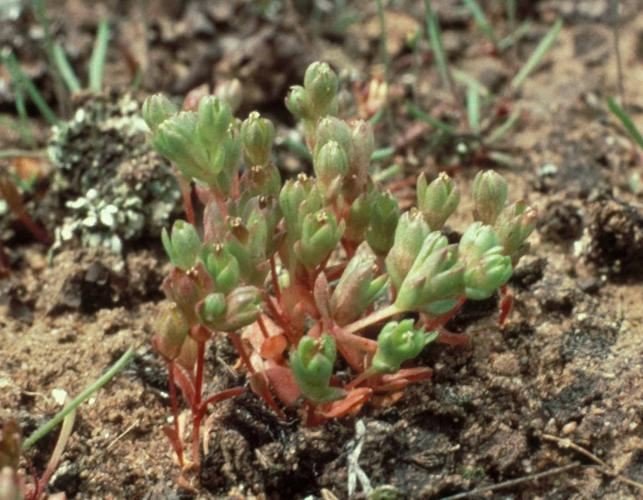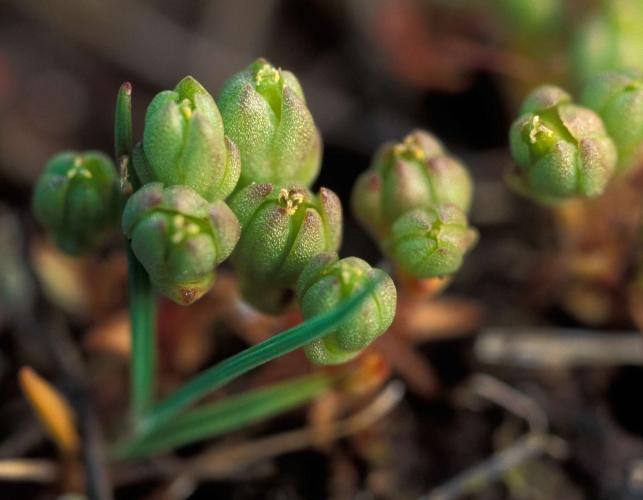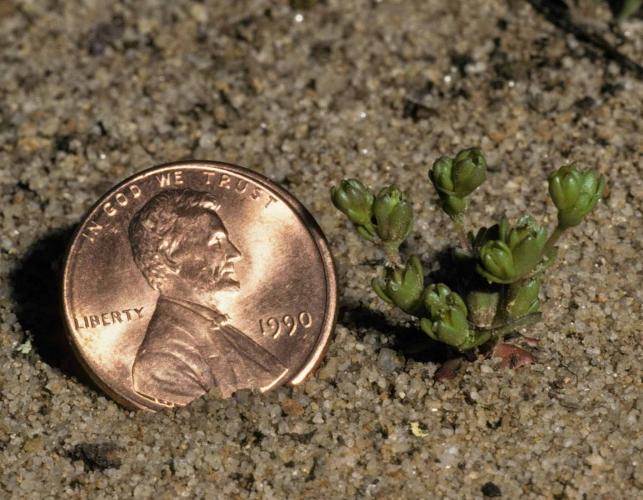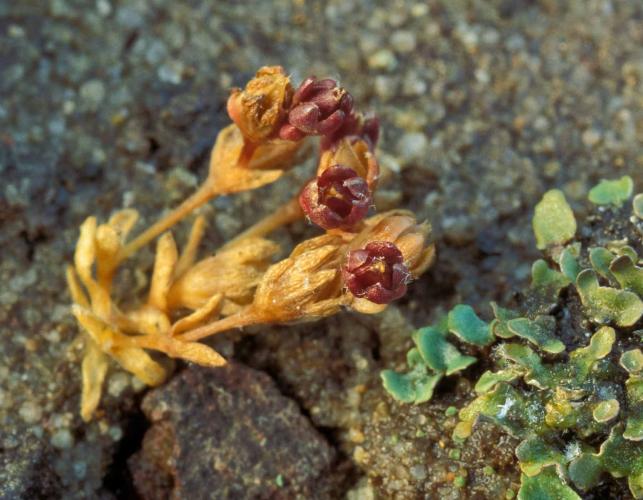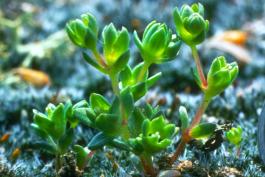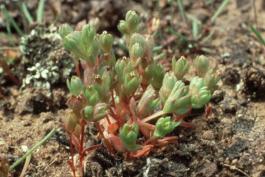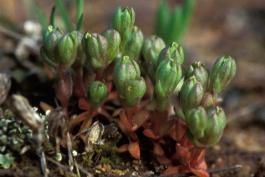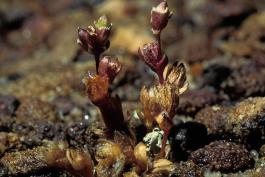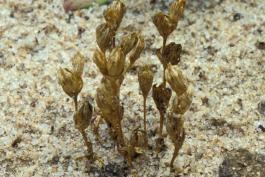
The genus Geocarpon contains only this single species. It is a small, annual, succulent plant growing 1½ inches tall. Young plants are dull green, sometimes tinged with red, and may become wine-red as the growing season progresses. The leaves are tiny and cup shaped, growing opposite each other along the branches. Geocarpon blooms mid-March–early May. The flowers are green and inconspicuous, growing at the base of the leaves, and may appear to be leaves themselves.
Height: to about 1½ inches.

Geocarpon populations in Missouri are restricted to Dade, Polk, Greene, Cedar, Jasper, Lawrence, and St. Clair counties in the Ozark and Osage Plains Natural Divisions.
Habitat and Conservation
Channel sandstone glades and outcrops, many less than one acre in size. Within these glades, geocarpon thrives at the base of slightly tilted rock outcrops where seepage water flows across and forms shallow, sandy or gravelly depressions. Restoration efforts include glade management with prescribed fire, reduction of woody vegetation, and invasive species control.
Status
A species of conservation concern, listed as endangered by the Missouri Department of Conservation and as threatened by the U.S. Fish and Wildlife Service. It is the only plant in its genus. It is in the same family as carnations, catchflies, chickweeds, and pinks.
Life Cycle
Blooms from mid-March through early May. The flowers are green and inconspicuous, growing at the base of the leaves, and may appear to be leaves themselves. Fruits mature from May to early June. Plants die 4 to 6 weeks after seed set. The following December seeds germinate into tiny rosettes, which appear as a tiny cluster of leaves on the ground. The rosettes remain through winter and develop into mature plants the following spring.
Human Connections
If you can't find this minute, extremely rare plant, keep your eyes open anyway, for there are still many wonderful, tiny things to discover: antlion traps in sandy soil, dozens of species of mosses, mushrooms with all sorts of curious shapes, and hundreds of other amazements.
Ecosystem Connections
Geocarpon has its own unique place in nature. People have different beliefs about "why" and "how" the species on our planet came to be, but we all can agree that life is interconnected, and that we will probably never know all there is to know about nature.

